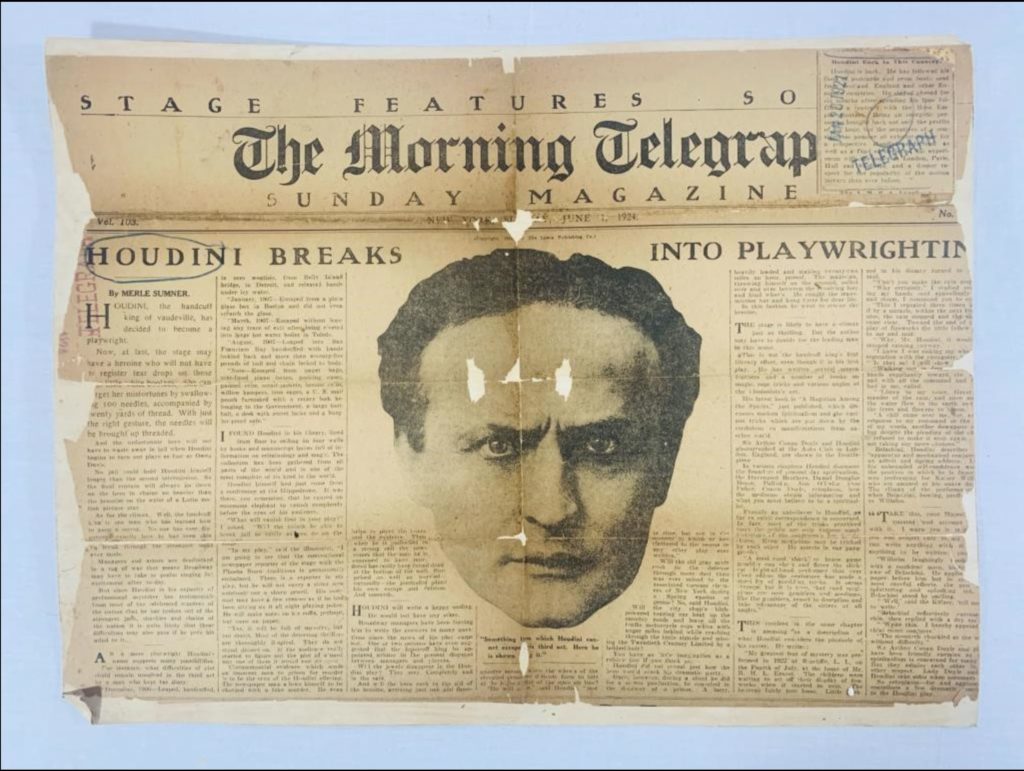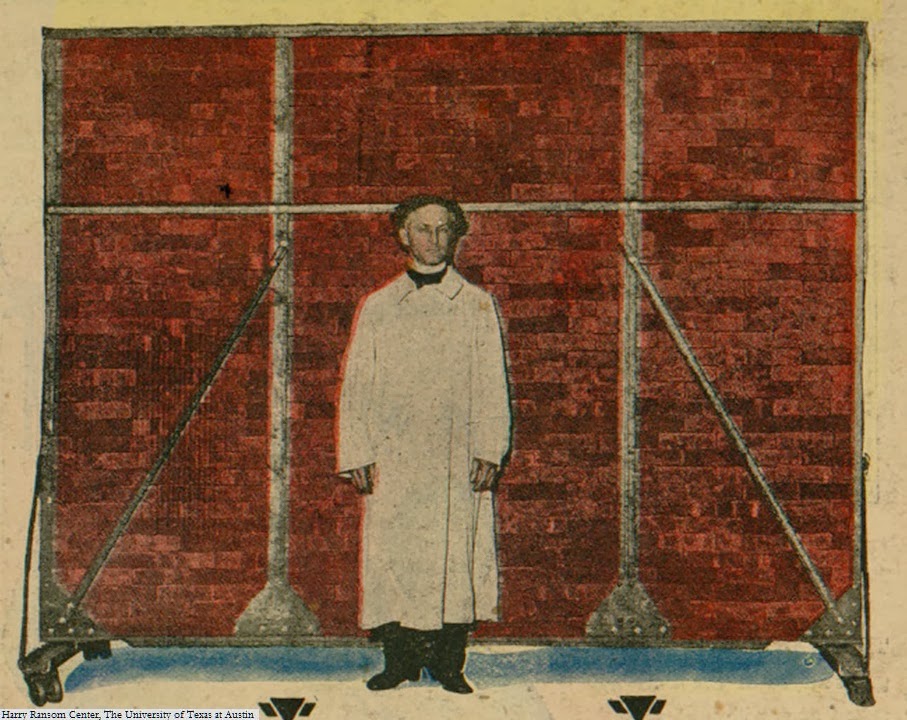 Last year I acquired the 1924 newspaper article, Houdini Breaks into Playwriting, describing a new stage play adapted from The Grim Game.
Last year I acquired the 1924 newspaper article, Houdini Breaks into Playwriting, describing a new stage play adapted from The Grim Game.
- WILD ABOUT HARRY: The Grim Game on stage? (wildabouthoudini.com)
- Houdini Adaptations – Arthur B Reeve | harryhoudinicircumstantialevidence.com
Houdini actually broke into playwriting (if you can call it that) between 1911 and 1914 where he registered three of his famous illusions as “playlets” or short plays, with the U.S. Copyright Office. These deposited scripts are now held within the Reader’s Collection, Library of Congress Copyright Office Drama Deposits.
The three playlets were also published in the Linking Ring [Jun to Aug 1967] and Patrick Culliton’s books, Houdini’s Strange Tales – A Collection of fiction by the legendary Harry Houdini [1992], “Houdini Unlocked”[1997], and “Houdini – The Key” [2010]
Edgar Heyl says: “these plays are unbelieveable bad. Yet Houdini barged right ahead in writing them, completely oblivious of plot, motivation, characterization, credibility, reality and the many other factors that make the work of a professional playwright so difficult.”[Linking Ring August 1967]
This post continues a 3 part series of posts where I summarize and share tidbits about the three copyrighted plays that he wrote:
- Challenged or Houdini Upside Down (Copyrighted August 1, 1911)
- Walking Through a Brick Wall (Copyrighted July 15, 1914)
- Buried Alive (Copyrighted September 9, 1914)
Today we look at Walking Through a Brick Wall
Houdini purchased the idea on May 4, 1914. The play was written shortly after purchase of the illusion, possibly on the boat coming back from England. Only one copy was deposited and it consisted of 4 octavo sheets typewritten double spaced.
SUMMARY
The plot of this playlet involved a father who constructed a brick wall to keep the son of his “mortal enemy” from being able to look into his garden. The father states, “The day you can walk through the brick wall that separates our houses. I’ll give you my daughter.” The next day the father wakes up to see the young man made it through the wall. To his new fiancée, he explains, “Alice, whether I did or not [walk through the brick wall], everything is fair in love and war. This playlet includes a note after the curtain, which explains the illusion.
[Houdini and the Magic of Copyright by Marilyn Creswell (March 24, 2021)]
Per Culliton:
Houdini didn’t invent this amazing effect. He purchased the American rights from an Englishman named Sydney Josolyne. As usual Houdini had to try to protect the illusion from the plagiarists who had plagued his career and establish that, in the states at least, “Walking Through a Wall” was exclusively his. He accomplished this by copyrighting the playlet.
His lack of playwrighting ability aside, there is some old Houdini genius built into this play. He tells us precisely what the effect involved, and he even tips the secret if one can read between the lines.
Per Edgar Heyl:
I’ll never undestand what Houdini had in mind in writing this ridiculous playlet…that practically told how the illusion had been performed…material filed in the Copyright Office is open to public inspection at any time.
[Linking Ring August 1967]
Per Marlyn Creswell:
Soon others began selling cheap blueprints of the apparatus Houdini used to perform the trick. Even though the copyrightable words and script of Houdini’s playlet were not necessarily infringed, the act lost its appeal once its illusion’s methodology was well-understood. Houdini only performed the trick a few times, and then sanctioned his younger brother, Hardeen’s use of the trick.


You know, it’s pretty clear Edgar Heyl didn’t understand that these were written to establish copyright on the effects. His criticisms are ignorant.
Totally agree. These were to protect his effects and not any sort of serious attempt at playwrighting.
I wonder if Christopher or someone might have called him out in a later issue? I feel like this would have irritated Christopher who certainly understood what these were.
If someone did, I didn’t come across it when I was doing research for these posts.